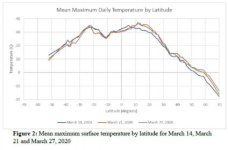This is a seminar from Tong Zhaohui, VP of Beijing Chaoyang Hospital, top Chinese expert in respiratory diseases and critical medicine, talking about the intubation for severe COVID patients. He went to Wuhan on Jan 18, still in Wuhan now and won't return to Beijing until most COVID ICU wards are out of use.
http://zhishifenzi.com/depth/depth/8589.html
Impossible to translate the whole video, you can look through the terms and numbers in the slides (I'll try to summarize his points below to address your questions about intubation). Some of the contents were translated in this English report.
http://www.china.org.cn/china/2020-03/30/content_75877166.htm
Tong Zhaohui suggested for ARDS patients, late intubation is with poor prognosis.
Intubation timing:
If PaO2/FiO2<150 mmHg after 2h of non-invasive ventilation with high O2, intubation should be applied immediately.
ECMO timing:
At the optimal ventilation conditions (FiO2≥0.8, tidal volume 6 ml/kg,PEEP≥10 cmH2O), if any of the following criteria is met, ECMO should be conducted if possible.
(1)PaO2/FiO2 <50 mmHg, over 3h
(2)PaO2/FiO2 <80 mmHg, over 6h
(3)FiO2=1.0, PaO2/FiO2 < 100 mmHg
(4)arterial blood pH<7.25 AND PaCO2>60 mmHg, over 6h, and >35 breaths/min
(5)>35 breaths/min, arterial blood <7.2 AND plateau pressure>30 cmH2O
(6)severe air-leak syndromes
(7)co-occurring cardiac shock and arrest
He also discussed about other interventions for patients on ventilators and ECMO, such as sedation/muscle relaxants, vasoconstriction, deep vein thrombosis prevention, nutrient supplies.
For my understanding, a guideline/protocol really depends on the capacity and resources of a healthcare system/hospital at the moment. In Jiangsu where COVID was not hard hit, doctors even did lung transplantation for critically ill patients whose lungs were largely damaged by COVID and the transplantation worked well. It is almost impossible for the hard-hit regions to do so where ventilators and ECMOs are in short, where patients of old age and with underlying diseases are on the bottom list of ECMOs. That's why I asked earlier about DNR/DNI. In China, it is not as common as in Western countries. According to Tong Zhaohui's ECMO criteria, if a severe COVID patient got cardiac arrest, ECMO would be considered in China. If the patient signed DNR (not likely in China but more likely in West), what would the doctor do?
Thank you.
And yes, its a great discussion here too.
But here the anesthesiologists put the accent on the meaning of "early and late".
Because we have different words for Early as "early in the morning" and Early as "untimely early",
and different words for Late as "late in the evening" and "I'm sorry to be late".
So they think of Early and Late to be both untimely.
And for me that's strange, because in all materials on the matter I find Early and Late with a meaninig of "early in the morning and late in the evening".














